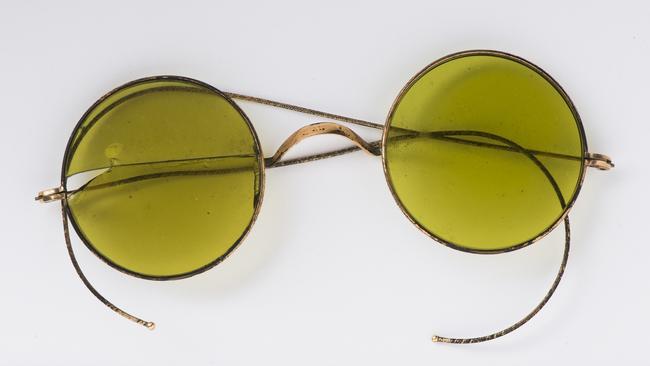A republic through the eyes of George Ernest “Chinese” Morrison
This extraordinary Australian retraced the steps of Burke and Wills, walking 3200km from Normanton to Melbourne. Then he set off for China...

Every object tells a story, sometimes obvious, sometimes obscure, usually independent of that item’s appearance. For each Object Lesson column, I take a commonplace object encountered in my travels, and draw from it an otherwise hidden tale.
A hundred years ago, the conjunction of Morrison and China had altogether different associations in Australia.
George Ernest “Chinese” Morrison devoted half a lifetime to the east in the capacities of foreign correspondent, plenipotentiary and pedestrian. Perhaps no Australian has travelled so far in their life on foot.
The habit started in youth. In January 1880, just before his 18th birthday, Morrison walked 1200km from Geelong, where he attended school, to Adelaide, where he concluded by watching cricket at Adelaide Oval. He wore his cricket blazer, carried two billies, a tomahawk and lead pencils for writing a diary, which he submitted successfully for publication in The Leader.
On the way, Morrison lunched with a phrenologist, who told him he was of sedentary inclinations and would make a good parson. “In the immemorial history of quackery,” notes Morrison’s biographer, Cyril Pearl, “there can never have been a prognosis more unsound.”
After becoming the first man to canoe the Murray, a 65-day, 2000km journey just for the hell of it, Morrison set off to investigate the Kanaka trade, producing half a dozen stories for The Leader based on his experiences as an ordinary seaman aboard a blackbirder, the Lavinia, and a powerful 2700-word letter to The Age, which caused the Colonial Office to take notice of “this traffic in flesh, encouraged by the Queensland government and fostered by the Imperial Government”.
Between times, Morrison retraced the steps of Burke and Wills, walking 3200km from Normanton to Melbourne. The going was a great deal harder when he then secured the backing of The Age and the Sydney Morning Herald to explore New Guinea, which the Queensland government was seeking to annex.
Halfway through his small party’s planned 160km journey through mountainous terrain, he was speared twice by hostile tribesmen and had to be evacuated. Not until he went to Edinburgh to resume his spasmodic medical studies was the spearhead in his groin surgically removed.
Morrison was 31 when first he journeyed in China, sailing, riding and walking the Yangtze from Shanghai to Rangoon, almost 5000km. Unarmed, and knowing no more than a dozen words of the local language, he nonetheless compiled a picturesque travelogue: An Australian in China, being the narrative of a quiet journey across China to Burma (1900).
Morrison confessed that the journey had converted him. His initial “strong racial antipathy to the Chinese common to my countrymen” had given way to a “lively sympathy and gratitude” in the face of both local generosity and missionary ignorance; his steadfast imperialism was leavened by a distaste for some of its entailments, including the opium trade.
“China may be a barbarous country,” Morrison concluded. “Many missionaries have said so … but let us for a moment look at the facts ….
“During the last 23 years foreigners of every nationality and every degree of temperament, from the mildest to the most fanatical, have penetrated to every nook and cranny of the empire …
“But all the foreigners who have been killed can be numbered on the fingers of one hand, and in the majority of these cases it can hardly be denied that it was the indiscretion of the white man which was the inciting cause of the murder.
“In the same time, how many hundreds of unoffending Chinese have been murdered in civilised foreign countries?”
On the strength of the book, Morrison was recruited as its Asian correspondent by The Times in London — so influential was the newspaper in this heyday of print that the appointment was quasi-diplomatic as well as journalistic. His 30,000-word account of the Boxer Rebellion — during which he and head of the Imperial Customs Service, Sir Robert Hart, were reported dead — remains as vivid as the day it was posted to London on 108 sheets of paper.
“Gibbon could not have told the story better,” opined The Spectator. “It has been accepted as the history of that strange episode.”
Morrison was a natural, observant, footslogging reporter. “He has a happy faculty of getting acquainted with every one,” observed Hart’s interpreter, Willard Straight. “And what is more to the point, finding out all about them without telling anything about himself.”
Morrison also aspired to being a player in eastern affairs, and his views grew as coloured as these spectacles, an intimate relic among a personal collection of 255 boxes in the State Library of New South Wales, which matched his blue-green eyes.
Morrison was impressed by the growingly confident and virile Japan, whose victories in the Russo-Japanese War he admired.
He renounced journalism in August 1912 for a role advising the second president of the Chinese republic, Yuan Shikhai.
But without his bully pulpit, Morrison’s prestige was diminished. “Occasionally I think I have some influence with the president,” he confided in a friend. “But I have many disappointments and I cannot see that the Chinese of the Republic are very different from the Chinese that we knew 15 years ago.”
Morrison soured on the increasingly despotic Yuan. Although he was able to cajole China into entering the war on the allied side in August 1917, he looked with growing wariness on Japan, a “treacherous ally”, and was bitterly disappointed by the terms of Versailles for which he believed there would be hell to pay.
China was not to be “solved” by standard diplomatic means.



To join the conversation, please log in. Don't have an account? Register
Join the conversation, you are commenting as Logout